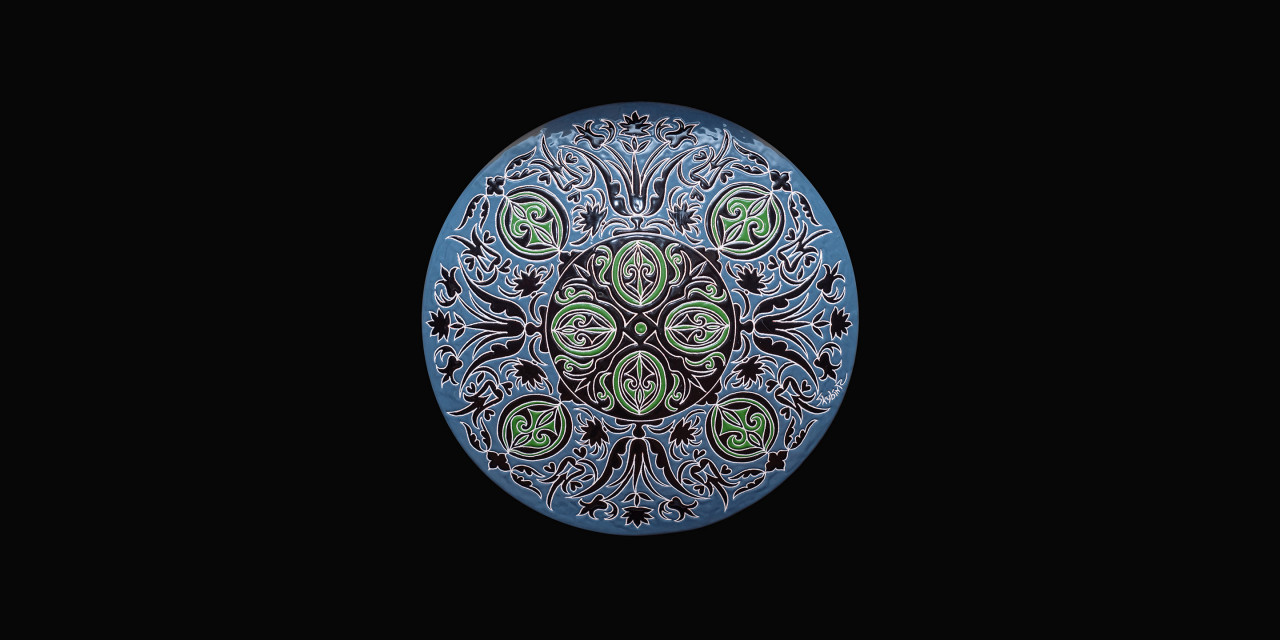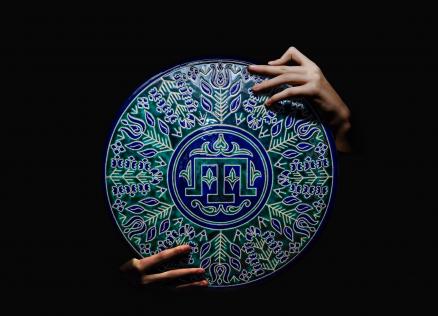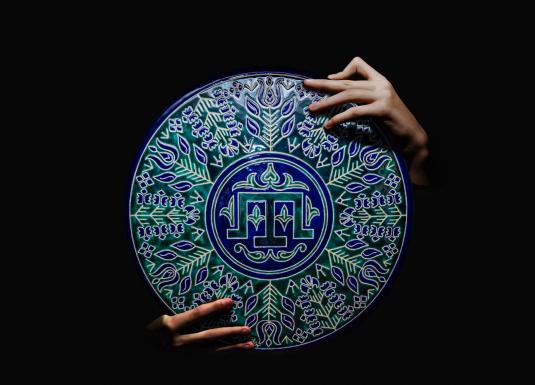Tulip (Lâle)

This shield is based on a 17th-18th-century helmet in the Metropolitan Museum of Art (USA). It was engraved with floral and geometric motifs. The style and shape of the helmet are classical for a medieval Muslim army, but the Arabic inscriptions indicate that it originated from the Crimean peninsula. The decoration of the helmet is accentuated by a tulip. Together with other plant elements, it symbolises the tree of life. Traditionally, the tulip has been used in architecture, decorative and applied arts since the time of the Giray’s Khanate. It is an endemic of Crimea and one of the main symbols of Crimean Tatar ornamentation. The image of the tulip originates from the city of Feodosia, and is found in the palace of the Giray’s, on tombstones, in traditional Crimean Tatar embroideries, and in ornaments for jewellery. Engraved oval and rhombic shapes and symbolic ram's horns are particularly characteristic of Crimean metalwork and paintings. The combination of these motifs could symbolise life force.
Tulips, combined with rhombus and oval shapes, became the content of the decoration of the ceramic shield. The accent colours of the work are green and black. They bring out the ornaments against the grey background. The overall composition of the shield, like that of the helmet, is in a unified style, using elements of ancient ornamentation typical of the culture of the Crimean Khanate.

